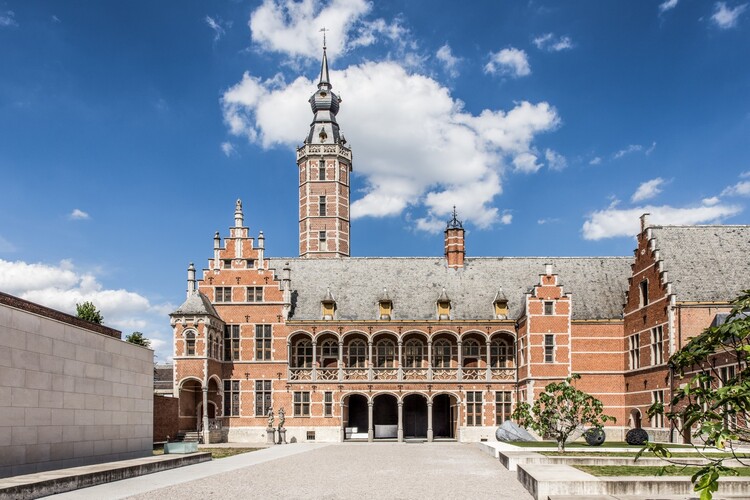
Hof van Busleyden City Palace and Gardens
About Hof van Busleyden
Hof van Busleyden is a fine example of 15th and 16th-century aristocratic architecture typical of the Low Countries. Over the years, the city palace has had various uses ranging from a stately private residence with lush gardens to an alms house for the poor. Today, it is home to Museum Hof van Busleyden, named after the very first occupant of the house.
Hiëronymus van Busleyden, the Man who Built this House
The story of this city palace begins in 1496, the year in which François van Busleyden purchases a home on Koestraat in Mechelen. At that time, the city is the bustling centre of the Burgundian Empire. After the death of François in 1502, his home passes to his three brothers. Several years later, in 1506, Hiëronymus van Busleyden buys his brothers out. He has just been appointed to the Great Council, the highest judicial body of the time, and needs a residence of his own in which to host his guests in style.
Hiëronymus begins to extend the city palace not long after taking possession. With help from the famous Keldermans architectural family, he extends the home to create a building with two main wings, a garden, stables, storage and servants' quarters. A beautiful, open, outdoor gallery joins the old to the new: it creates a passage from the garden to the inner courtyard, thereby connecting the oldest part of the house to the newest.
The building of the new wing is completed in 1508. The large garden follows, giving direct access to the home's most public spaces. It allows you to step directly into the dining room, the most important reception room in the city palace. The rooms take on a more intimate character as you proceed further into the house.
Humanist City Palace
As a humanist, van Busleyden is active in developing an international network. His guests include names that are familiar to us to this day, such as Erasmus and Thomas More. The hypocaustum is a remarkable space in Hof van Busleyden, a room that can still be visited today. The highlight of the room are the beautiful murals inspired by Italian works. They depict mythological scenes from antiquity and stories from the Bible. The frescoes were undoubtedly conversation pieces that would have inspired the lengthy conversations that took place there.

